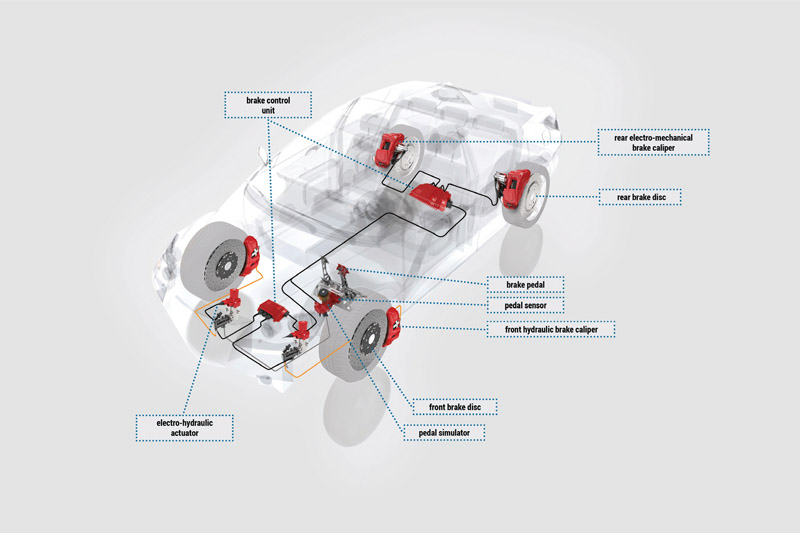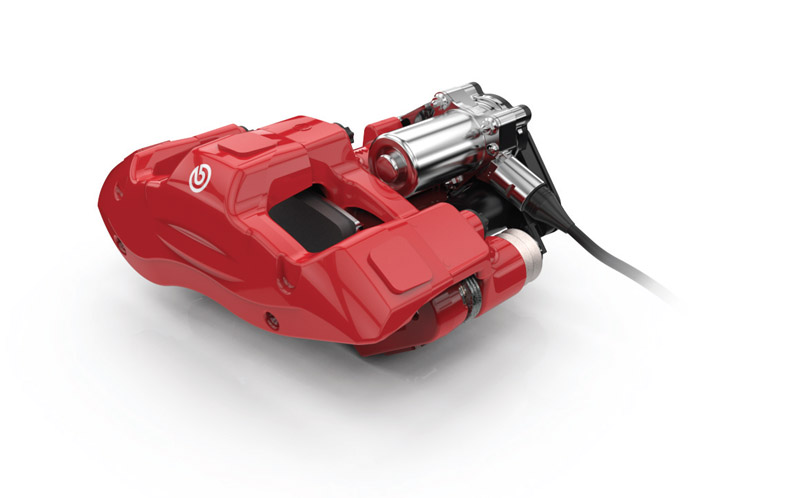
The Italian automotive brakes systems manufacturer Brembo has a long history in designing the latest technology for braking applications. With its finger on the pulse, its most recent introduction, the ‘Brake-by-Wire’ system is set to take the EV and hybrid world by storm. PMM finds out more.
‘Brake-by-Wire’ is a wet/dry system. Dedicated aluminium high performance calipers, each powered by an electrohydraulic actuator, are found at the front. The rear calipers are electromechanically actuated and therefore don’t require brake fluid. The brake pedal is completely decoupled in normal operation.
This means that there is no physical mechanical link between the calipers and the brake pedal. The brake pedal, instead, functions as a simulator. A sensor in the pedal, upon being pressed by the driver, transmits a signal to an ECU, which then drives actuators to control the rear and front calipers.
The brake pedal is completely decoupled because such systems are the only ones that allow VMs to move to the higher levels of automated driving. On top of this, a completely decoupled brake pedal is necessary to afford optimum use of regenerative braking on hybrid and electric vehicles. When a vehicle slows down, electric motors are used to recharge the batteries which in turn generate a certain deceleration. This deceleration alone, however, is not always enough, particularly for high deceleration stops. It is, therefore, necessary to add the effect of friction braking to regenerative braking. The seamless combination of these two braking methods ensures optimum regenerative braking, which in turn maximises energy recuperation.

How ‘Brake-by-Wire’ works step by step
- Just like in a traditional hydraulic braking system, ‘Brake-by-Wire’ is operated by pressing the brake pedal
- When pressed, the pedal’s travel sensor detects the pedal’s position, immediately communicating the relevant braking information to the ECU
- Simultaneously, the ECU processes this information, sending a command to the actuators
- The electromechanical hydraulic actuator converts this command into caliper hydraulic pressure/clamping force, slowing or stopping the vehicle
- Should any element of the ‘Brake-by-Wire’ system experience a malfunction, any anomalies will be detected, and the non-functioning part bypassed. In this scenario, the architecture of the actuators in the wheels enables the braking system to automatically reconfigure itself. The system continues to operate through the devices that are functioning, guaranteeing deceleration that is superior to what is required by law (2.44 m/sÇ)
- In the event of a total loss of electricity, the conventional hydraulic safety system will take over for the ‘Brake-by-Wire’ system, enabling the braking system to operate on the front wheels









